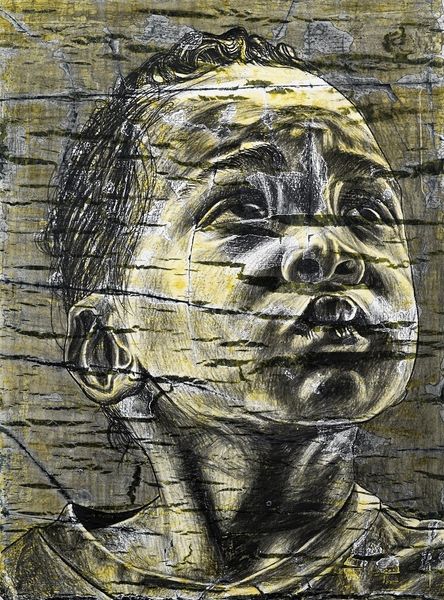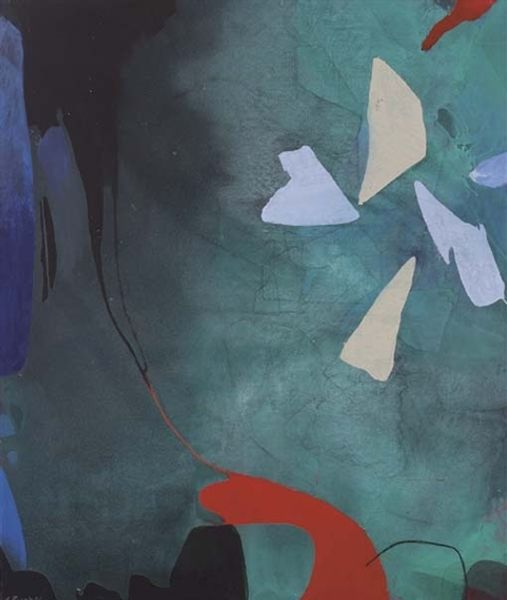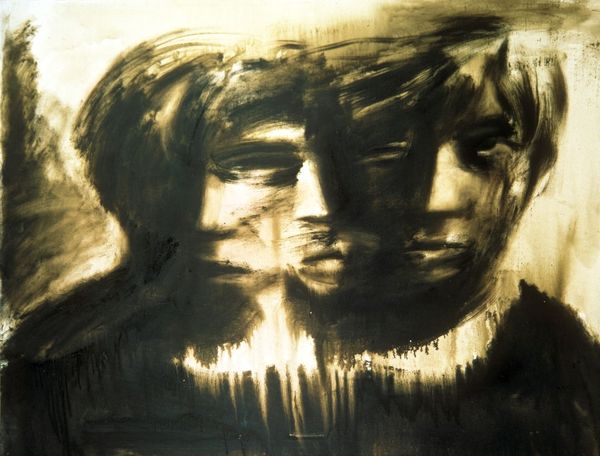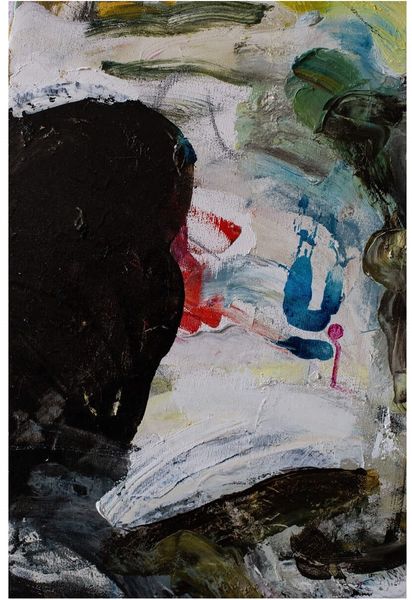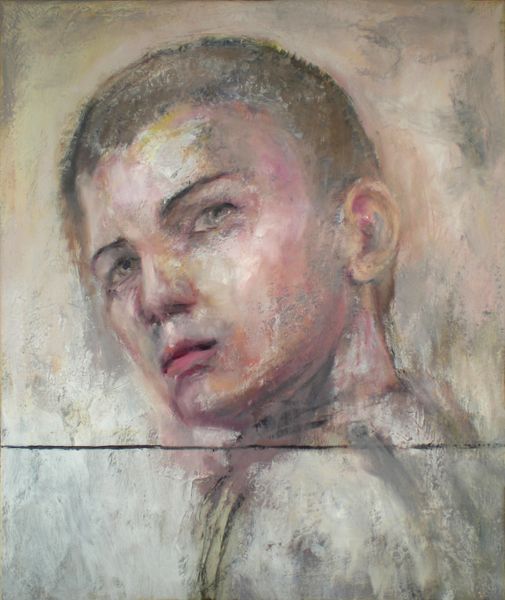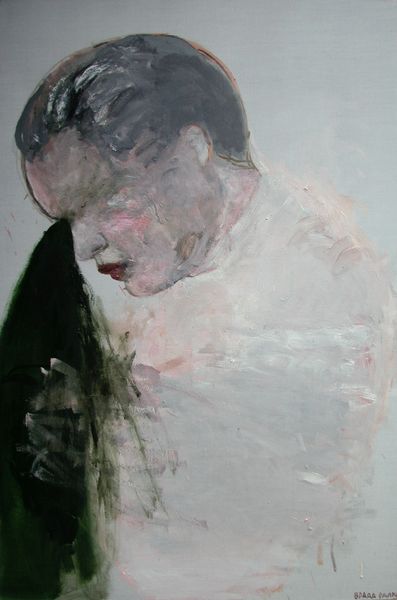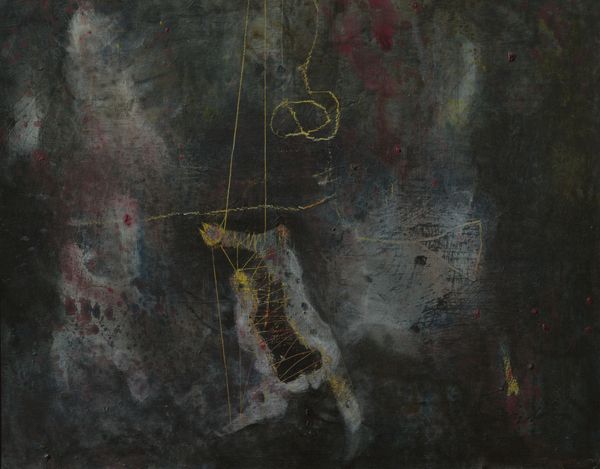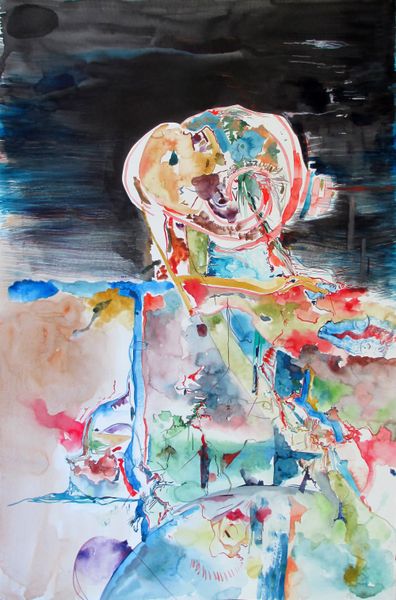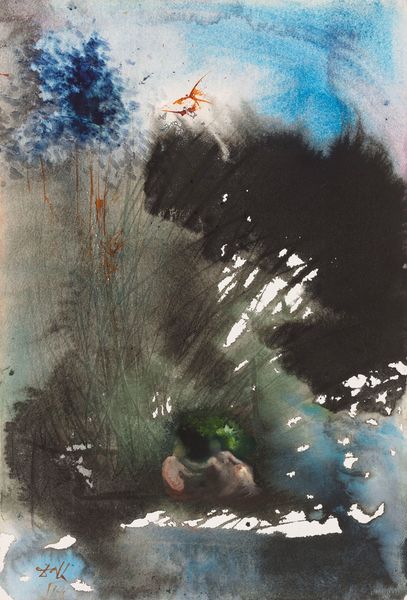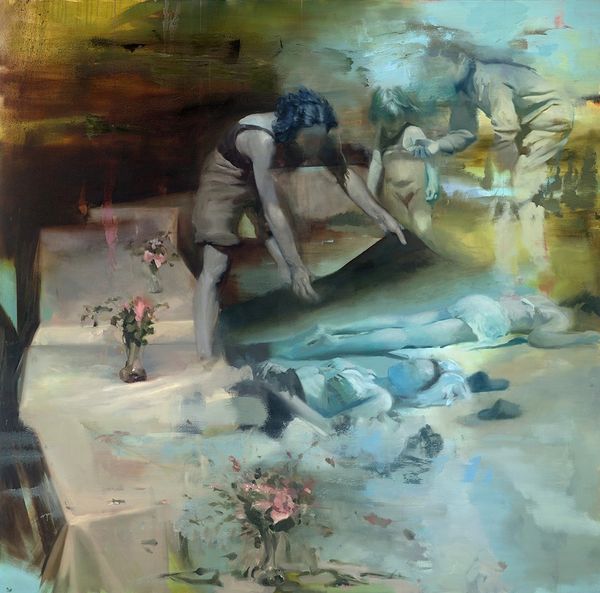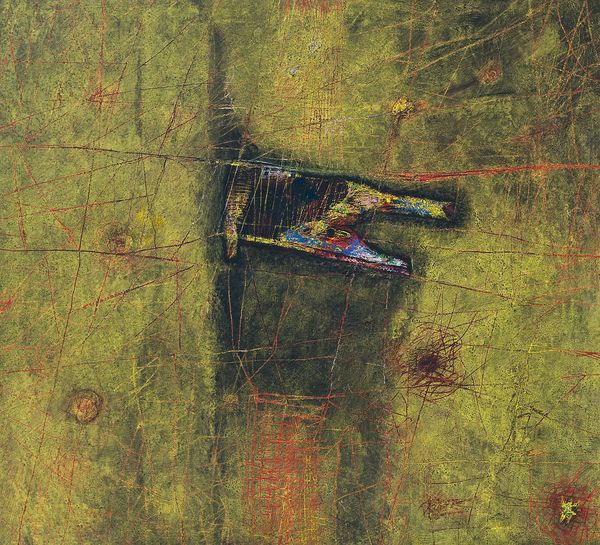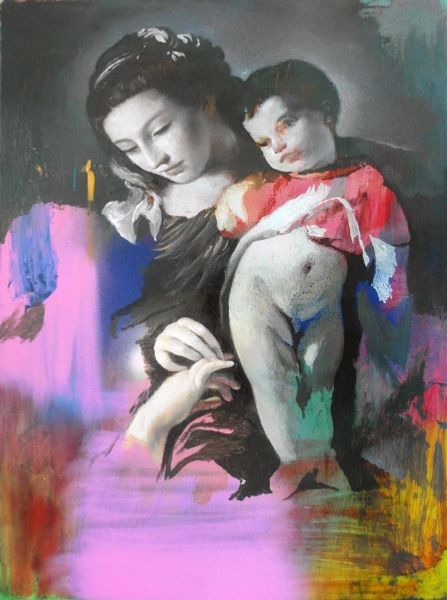
painting, oil-paint
#
portrait
#
abstract painting
#
painting
#
oil-paint
#
figuration
#
oil painting
#
realism
Copyright: Modern Artists: Artvee
Curator: Here we have Joshua Flint's 2020 oil painting, "The Hidden & Unknowable." Editor: There’s a wistful air about this piece. The subdued palette and almost ghostly layering give it a fragile, dreamlike quality. Curator: Flint’s technique is interesting. Note how the oil paint is applied in thin washes, allowing underlying layers to peek through. There's a real emphasis on the materiality and process—how these contribute to the overall sense of something just out of reach. Editor: Yes, the bare branches overlaid on the boy’s face immediately suggest a barrier, something obscuring his true self. The color scheme reinforces this. That particular shade of teal evokes both melancholy and introspection. Is there a potential tie to classical symbolism associated with these natural motifs? Curator: Well, considering the artist's exploration of memory and identity, the branches might represent the tangled web of experiences that shape a person. He could be deliberately using commonplace imagery, transforming its function through repetition and subtle material alteration. The social and physical processes of "becoming" are never straightforward. Editor: The closed eyes lend further to the title. This image evokes themes of secrecy and the impenetrable nature of inner life. It might be that Flint aims for more than just material process; he’s exploring fundamental questions about consciousness, childhood, and memory as it manifests through inherited imagery. Curator: Possibly. But I wonder if it’s as deliberate as all that. There is something so potent about simply letting the paint and material processes guide him to new revelations and insights. That balance between intention and material improvisation gives it an unusual force. Editor: It makes you reflect, certainly. How personal memory filters everything we perceive about ourselves. It suggests an identity constantly under construction, obscured behind shifting, organic forms. Curator: Indeed. By engaging with art that highlights material processes as a way to question norms, we encourage the viewer to look closely, feel, and question what they consider art to be. Editor: By deciphering those familiar cues, we better comprehend what may shape ourselves or our experience, not only when interpreting visual artifacts, but within ourselves as we evolve.
Comments
No comments
Be the first to comment and join the conversation on the ultimate creative platform.

